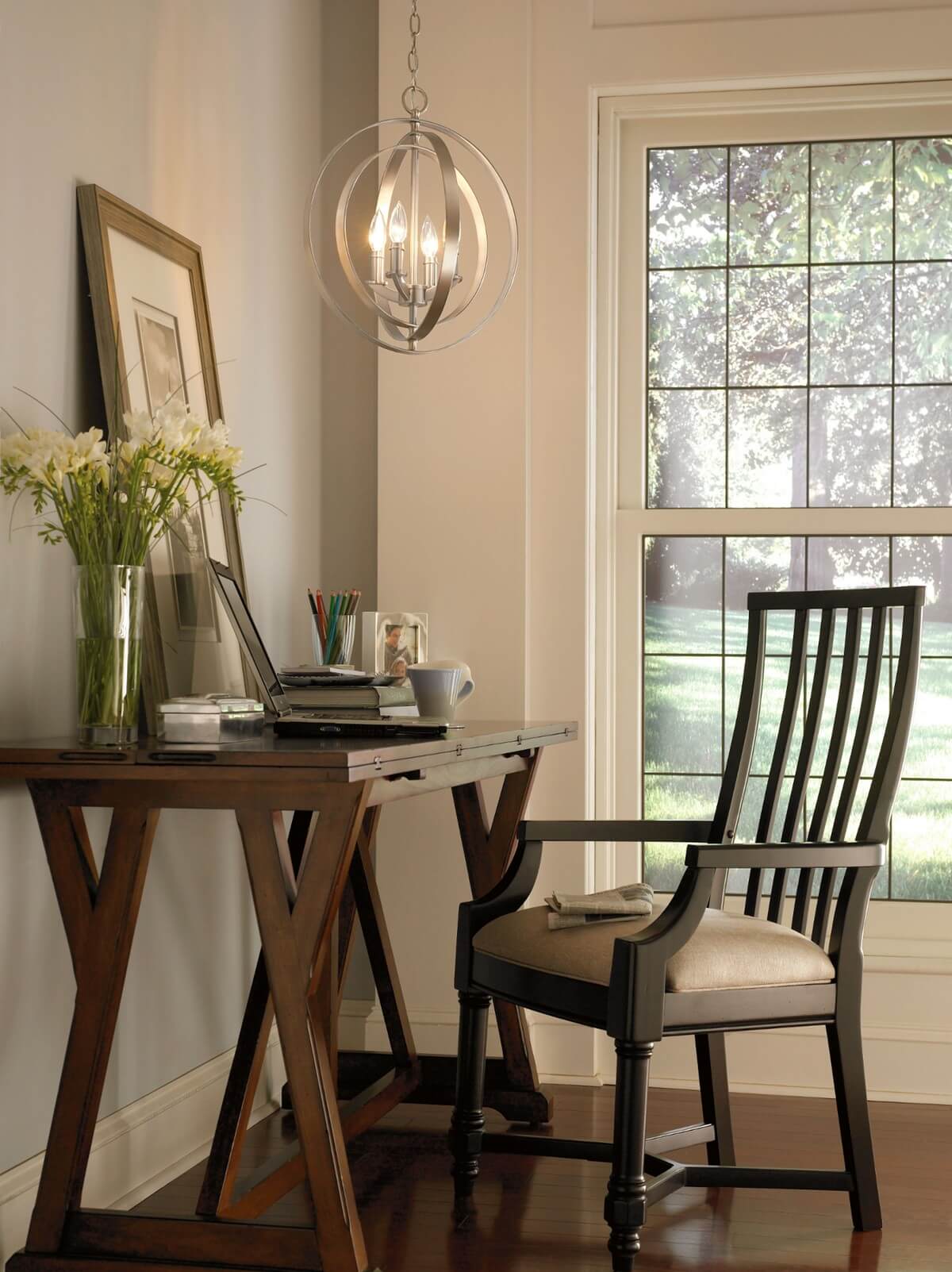Many people have found themselves working from home. Whether setting up shop at the kitchen table or creating a complete home office, here are simple hacks to make your new work environment comfortable and productive.
“No matter which room becomes your workspace, proper lighting plays a key role in avoiding fatigue, eye strain and other discomforts,” said Jennifer Kis, director of marketing communications, Progress Lighting.
Begin by defining your workspace. Setting up on the kitchen or dining table can work — temporarily. The upside is that it’s quick and easy. But these rooms are typically high-traffic areas, leading to distractions. Plus, you might have to pack up work at mealtimes. Instead, re-purpose a small table and chair and place it in an out-of-the-way spot, such as a stairwell or bedroom corner.
Next, think about lighting. Layering light is a basic technique that should be used in every room, but especially home offices.
“Balance the lighting for different times of day. Natural light for day, layered light for afternoon and task lighting at night,” recommends Piper Stromatt, lead designer and partner for Curate Custom Homes. “There are three layers of light to consider: ambient or general light, task lighting and decorative or accent lighting.”
Select a location with a good source of ambient light. Natural light is ideal: it diffuses throughout the space, bouncing off walls and ceilings to cut down on glare that can reflect on the computer monitor and the shiny desk surface.
“When selecting ambient light sources, the goal is to illuminate the entire space without creating undue glare and contrast, which can lead to headaches and eye strain,” says Kis. “If possible, avoid using overhead ceiling fixtures as the primary source of lighting. If that’s the only option, use a dimmer switch to vary light levels as needed.”
Positioning your workspace correctly also helps. For rooms with natural light, place your desk perpendicular to the window, ideally facing north or south so that sunlight doesn’t cast shadows at certain times of the day. If an overhead fixture is the only light source, situate your workstation so that the light shines from behind it.
“Make sure your home office suits your performance under particular lighting conditions,” says Stromatt, who recommends the following tips:
• Don’t set your monitor in front of the window; the bright background light shining behind the screen causes eye strain.
• Place your chair at least arm’s length from the screen so that it can be seen without reading glasses or squinting.
• Add LED tape lighting behind your monitor or under a desk for diffused light.
• Use solar shades to soften lighting and lessen heat.
After setting up a glare-free workstation, add task lighting. Use dedicated light sources such as desk lamps for tasks like paperwork and filing. Place direct task lights on the opposite side of the hand you write with to avoid casting shadows onto your work.
Finally, add accent lighting for visual appeal. Frame your workspace with desk lamps or install a permanent fixture on a dimmer switch, such as a pendant hung directly over the desk. Wall sconces can throw light on decorative objects in the room.
For more home tips and lighting inspiration, visit Progress Lighting at www.progressltg.com/shop.
Lighting can make or break a home office. Be sure to set yourself up for maximum productivity and comfort.


